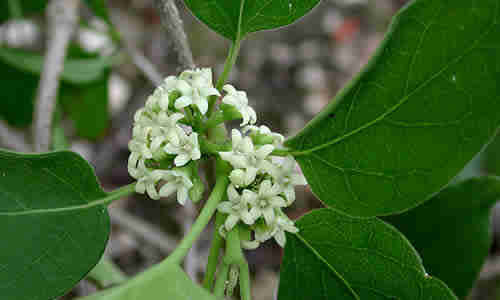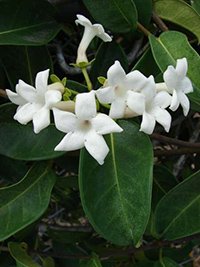Contents
The condurango plant is known and highly appreciated in South America, where it is used to cure stomach conditions. The native term condurangu (condor lima) points to the legendary tradition of the Andean condor, which used the leaves of this plant to heal itself from snake bites.

It was introduced to Europe in 1871 with the hope it would heal stomach cancer. However, this hope was false. The condurango plant possesses a mildly bitter, sour taste that resembles cinnamon.
Condurango Plant Scientific Facts
- Other names: Marsdenia condurango Rb. Ch.
- French: Condurango.
- Spanish: Condurango.
- Environment: This is a climbing plant of the Asclepiadaceae family that sticks to the trunk of trees until reaching the top. It has oval or heart-shaped hairy leaves that are light green on the underside.
- Parts of the plant used medicinally: The root and the bark of the stem.
Healing Properties and Warning

The root and bark of condurango contain essential oil, resin, organic acids, gummy substances, and starch. Condurangin, a bitter glycoside, is its most crucial active component.

Condurango has appetizer, digestive, and antiemetic properties. Its use is recommended for bloated stomachs and slow digestion. It also eases stomach spasms and aches, although it must not be used before diagnosing the disorder’s cause.
WARNING! When used in high doses, it has toxic effects, leading to convulsions and even respiratory failure.
How to use Condurango
- Decoction with 30-40g of bark or root in half a liter of water, boiling for 10 minutes. Then steep for 12 hours as a cold extract. Take from three to five spoonfuls before each meal.
DISCLAIMER: All content on this website is presented solely for educational and informational objectives. Do not rely on the information provided as a replacement for advice, diagnosis, or treatment from a qualified medical expert. If you are pregnant, nursing, or have any preexisting medical concerns, talk to your doctor before using any herbal or natural medicines.
REFERENCES
- George D. Pamplona-Roger, M.D. “Encyclopedia of Medicinal Plants.” George D. Pamplona-Roger, M.D. Encyclopedia of Medicinal Plants. Ed. Francesc X. Gelabert. vols. 2 San Fernando de Henares: Editorial Safeliz, 2000. 454. Print. [condurango plant]
